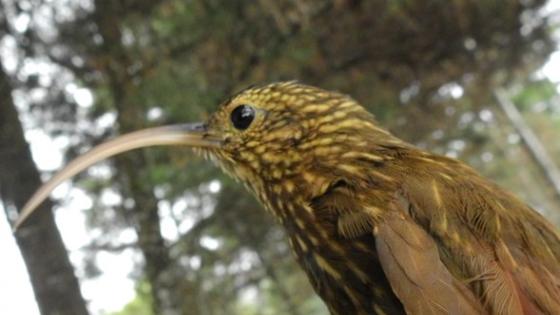In the recent monitoring carried out in the Aguas Frias Wildlife Refuge, 15 new species of birds have been registered for the cityamong which stands out the fluted scythe (Campylorhamphus pusillus), which was considered extinct in the regionsince for more than half a century there was no record with physical evidence of it and only until 2011, when it was reported again in the corregimiento San Sebastián de Palmitas, in the bird inventory of the Más Bosques para Medellín program for that year.
A second official record occurred in Alto de San Miguel, in 2016, and a third took place in the El Moral Reserve, in that same year. In the latter case, the presence of the species was evidenced on more than one occasion, which suggests that stable populations are forming.
Also read: Emilio, the pisingo that lives among ducks in Parque Norte in Medellín
Striated scythe-eater, the bird that returns to Medellín
Although the striated scythe-eater is not a threatened species, according to the criteria of the International Union for Conservation of Nature -IUCN. However, It is sensitive to human disturbance and requires highly conserved forests for its subsistence.a, which makes it an indicator of the current state of the forests it inhabits at a local and regional level.
“In the wildlife refuge we have been able to see different species of birds and other animals, but we are very happy because so far This year we have seen 15 new bird species, of which there was no record for more than 50 years. These spaces allow the conservation of birds and other species of wildlife that inhabit our territory, because in Medellín we protect and care for all forms of life,” said the undersecretary for Animal Protection and Welfare, Diana Marcela Santacruz Ordóñez.
The fact that the striated scythe-eater has been recorded for the fourth time, this time in the Aguas Frías Wildlife Refuge, is of great importance as it demonstrates that the site provides adequate conditions for the survival and reproduction of this bird. Additionally, their recognition in other reserves indicates that these natural areas have been essential to promote and strengthen the conservation of biodiversity in the District..
Aguas Frias, bird sanctuary in Medellín
In the Aguas Frías Wildlife Refuge, in the Altavista township, the Medellín District Administration is carrying out conservation, protection and monitoring processes, which has allowed, this year, the sighting of 15 new species of birds, such as the black hummingbird, the black-crowned eared-eater, the striped flytrap, the white-winged anambe, the butterfly tanager, the iguanera eagle, the Andean roadkeeper, the brown blackbird and the striped scythe-eater.
Plus: PHOTOS | They capture the largest bird of prey in Medellín
“In the shelter they have identified several species of birds and butterflies, which is a good indicator of the state of conservation of the Aguas Frías reserve. It is important to continue with these conservation spaces because they will allow new species to arrive, inhabit the reserve, improve ecosystem services and environmental services; For this reason, we also carry out activities of social, environmental and cultural appropriation with the communities surrounding the reserve so that they know, protect and help us conserve natural resources, and this territory of environmental wealth for the District of Medellín”, expressed the coordinator of the Aguas Frías Wildlife Refuge, Érika Cardona.
The appearance of these new species in the wildlife refuge shows the richness of biodiversity mainly in the rural areas of Medellín and the importance of protecting it; For this reason, the Ministry of the Environment will continue to work on monitoring the fauna and flora of that place, as well as in the natural reserves and strategic ecosystems, to guarantee their protection and conservation.
